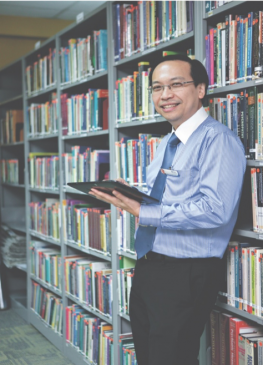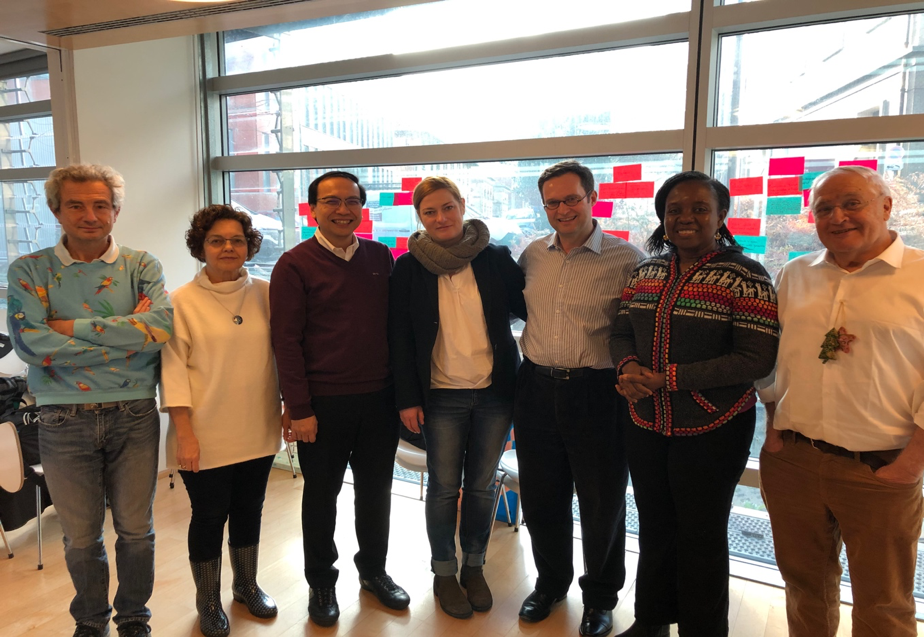Message from the IACAPAP President Dr. Daniel Fung

As a practicing child and adolescent psychiatrist, I cannot help but notice the increasing influence of the digital world on growing up. Today’s generation of infants, toddlers and children are increasingly exposed to infocomm technology (IT) quite unlike any that our generation was used to (or so we are told). The truth is that IT has always been with us in different forms. I was born in the 1960s, and my first technological influence was the television. I remember how I was glued to the TV and how naysayers then spoke of TV addiction. When I was a young man, personal computers became the new fad and video game arcades became the bane of Singapore’s society to the extent that the government banned children from visiting the arcades. In university, I experienced the social media of our time, the bulletin boards of communicating with fellow undergraduates (even though we may be sitting 2 metres apart). We are now hearing the same concerns of the Internet and social media. It would appear that we are called to take sides in the spectrum of possibilities that technology presents. You can be either technophilic or technophobic. Do we have to choose and categorise technology in this way?
Perhaps we need to take a more circumspect approach. Technology in its myriad of presentations are merely tools in our hands. We can use it, depending on how, for the boon or bane of our next generation. I would much prefer enabling technology to improve mental health than disable it. So between the extremes, perhaps we should take a nuanced and dimensional approach. Make the next generation of digital natives use technology to their benefit. How can we do that? We must embrace the technologies that appear before us. Learn how to use it to encourage healthy lifestyles. For example, having monitors in our devices such as cellphones and wearables allows the clinician new ways to interact with patients and families. Should we consider how such devices improve activity, exposure to light and sleep better. How can we encourage relationships and communication instead of expecting that only face to face interactions matter. When we didn’t have messaging, the phone was the instant messaging system that teens used for communication. I know that guidelines have emerged from professional organisations advocating the limitation of digital time for young children. But this is really not based on evidence base but professional expert opinion. I have personally also written and spoken on balance in the use of digital technology but I wonder if I am just like our forefathers who predicted the destruction of civilisation. Yet 40 years later, digital globalisation has only improved the world as we know it, not destroyed it.
The IACAPAP is an 80 year old organisation trying to stay relevant. As an association of associations, we have strived to provide a global perspective on improving mental health, and treating mental illness in our young. We do this through shared learning and training. I have stated in my inaugural message, the goal of our new team was to improve our relationships so that we can improve the relationships of the children that we want to care for around the world. We can only do this by spending time having a meaningful dialogue. We started with a quick survey in which we received over 240 responses from 47 countries. In December last year, we gathered 7 individuals, the current bureau (consisting of the immediate past president, president, secretary general and treasurer) and the previous bureau and spent two days sitting together, reflecting on the survey results, brainstorming on what we needed to do about our mission and vision for IACAPAP.

We also ranked what needed to be done. It was painful hard work but it helped us clarify what needed to be done. We unanimously agreed on our first priority, to focus on organisational development. We needed to identify a sustainable model of administration and link up with all our stakeholders, the national associations and their members. It was also painfully obvious that we cannot do this by having face to face meetings. We needed to find ways of communicating and relating to one another across our globe. And we would leverage on what has already been started by our past president Bruno Fallisard during his presidency. Bruno has driven a number of initiatives that took IACAPAP to the world, chief of which was the website and its interactive contents. The new team will build on this and make this readily accessible. We have identified 3 areas to focus on in this next four years:
- Developing a communication strategy that will connect our members
- Create an administrative framework for our global work including the hiring of professional staff
- Achieve a financially sustainable model to carry out our mission
This bulletin will showcase the start of this effort and how we intend to use the digital medium to connect our dots. What we must remember is that in creating the forest of opportunities, we do not miss the trees that is our members. I hope to connect with every Association in whatever means we can have to better understand the needs on improve the mental health of children in that part of the world. If you have ideas, please send them our way (info@iacapap.org)

